Land Invertebrates
Media
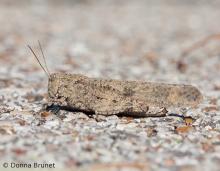
Species Types
Scientific Name
About 620 species in North America
Description
The short-horned grasshopper family includes many familiar jumpers. They are named for their antennae, which are relatively short compared to those in the "long-horned" or katydid group.
Media
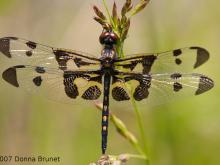
Species Types
Scientific Name
Species in the suborder Anisoptera
Description
Like damselflies, dragonflies have long bodies, two pairs of long, membranous, finely veined wings, and predaceous aquatic larvae. Dragonflies typically hold their wings stretched outward, horizontally.
Media
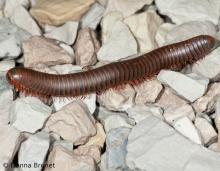
Species Types
Scientific Name
More than 900 species in North America north of Mexico
Description
Millipedes, which have two pairs of legs per body segment, are harmless detritus-eaters, move slowly, and curl up defensively when harassed.
Media
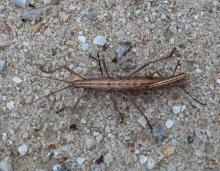
Species Types
Scientific Name
Anisomorpha ferruginea
Description
Be careful when approaching northern two-striped walkingsticks: They can squirt an acrid fluid at you. Musk mare, devil’s riding horse, and prairie alligator are all names for this remarkable stick insect.
Media

Species Types
Scientific Name
Aphonopelma hentzi
Description
The Texas brown tarantula is our state's largest spider. The hairy body and legs are uniformly dark chocolate brown, with reddish hairs on the carapace. Look for it on dry, rocky glades in the southern half of the state.
Media
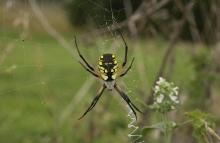
Species Types
Scientific Name
Argiope aurantia
Description
The black-and-yellow garden spider is large but harmless. It sets up large, circular webs in gardens and grasslands. Lucky gardeners can host this remarkable pest exterminator all season long.
Media
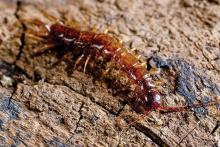
Species Types
Scientific Name
Hundreds of species in North America north of Mexico
Description
Centipedes are familiar to anyone who has overturned rocks and logs, sifted through leaf litter, or dug in the soil. Learn more about Missouri's members of class Chilopoda.
Media
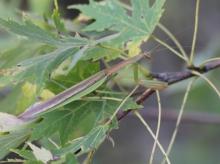
Species Types
Scientific Name
Tenodera sinensis (formerly T. aridifolia)
Description
The Chinese mantis is a large, green and tan ambush predator. This nonnative insect is often called a “praying mantis” because the front legs resemble hands folded in prayer.
Media

Species Types
Scientific Name
Species in the suborder Zygoptera
Description
Like dragonflies, damselflies have long bodies, two pairs of long, membranous, finely veined wings, and predaceous aquatic larvae that have extendible mouthparts. Damselflies typically hold their wings together, above the body.
Media

Species Types
Scientific Name
Syrbula admirabilis
Description
Although they both have slanted faces, male and female admirable grasshoppers look quite different: The females are large and marked with bright green and tan, and the males are smaller and wear brown, black, and tan hues.
See Also


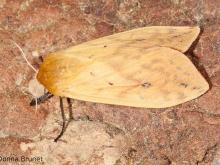
Media

Species Types
Scientific Name
Cisseps fulvicollis
Description
The yellow-collared scape moth is more often “orange-collared.” And whether you think it looks more like a firefly or a wasp, it’s still a moth!
Media

Species Types
Scientific Name
Nearly 150 species in North America north of Mexico
Description
Slim, delicate plume moths are instantly recognizable by their T-shaped silhouette, long legs, and muted shades of tan and brown. It can be hard to separate the various species.
Media

Species Types
Scientific Name
Pyrrharctia isabella
Description
Not many people know the adult Isabella tiger moth when they see one, but we’re all acquainted with its caterpillar, the woolly worm, or woolly bear.
About Land Invertebrates in Missouri
Invertebrates are animals without backbones, including earthworms, slugs, snails, and arthropods. Arthropods—invertebrates with “jointed legs” — are a group of invertebrates that includes crayfish, shrimp, millipedes, centipedes, mites, spiders, and insects. There may be as many as 10 million species of insects alive on earth today, and they probably constitute more than 90 percent all animal species.





















